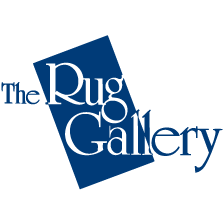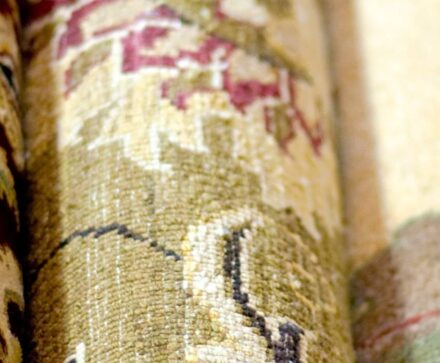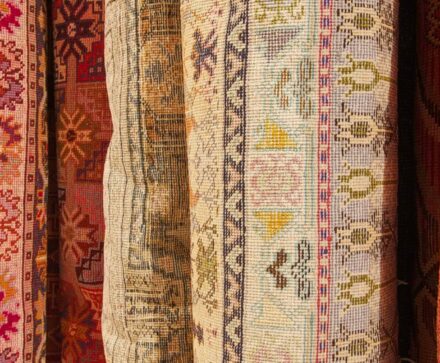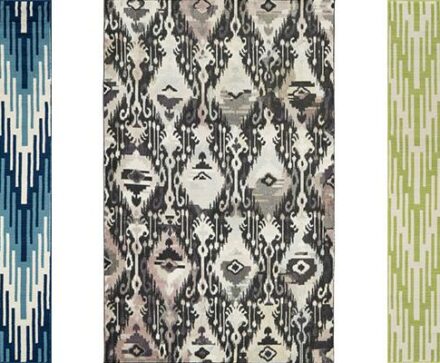Oriental Rug Terminology
Abrash. Border. Medallion. Field. These are all integral design parts that make an Oriental rug authentic. Sam Presnell, owner of The Rug Gallery, discusses what these terms mean and why they are important to the value of an Oriental rug. Listen or read more to find out about Oriental rug terminology.
John Maher: Welcome to The Rug Gallery with Sam Presnell. The Rug Gallery is an Oriental rug company and carpet store in Cincinnati, Ohio. I’m John Maher and I’m here with the owner of The Rug Gallery, Sam Presnell. Hi, Sam.
Sam Presnell: Hey, John.
John: Sam, our topic today is Oriental rug terminology. I’m just going to name off some terms that people might not know about to do with Oriental rugs and you can explain a little bit of each one of those. The first one is warps and wefts. What are warps and wefts?
Sam: Okay. Warps and wefts. That’s an easy one because warps are actually the fringes of a rug. Those are the strings or the loom which, actually, you tie the knots upon weave and hand-knotted rugs. They’ll go usually north to south, we would call them. We call east to weft, which is west, of course, is what holds the rug together sideways. Those are these little things you’ll see over the top and knot that basically hold the rug together; they interlock in between. They go on top and below the warp strands, which hold the rug together sideways. It’s usually a filler. This is a weft filler which, basically, you don’t always see until you get it really worn out. A lot of times, they’re exposed today just to give a ‘ribber’ effect to the design as well.
John: That’s how you can remember warps and wefts in which direction they go in. You remember wefts are east to weft. [chuckles]
Sam: Exactly. That’s how I remembered it. I took that exam. I always had that drawn in my head to make it easy so you’ll remember it. I’ve never forgotten that.
Types of Oriental Rug Knots
John: That’s good. Talk a little bit about knots and maybe different types of knots.
Sam: There’s lots of different kinds of knots. We call it cheating knots. A lot of people will try to make a rug faster by using creativity as far as knotting. Basically, there are two basic types of knots. The big knots are the Persian and what we call the Senneh. You have the Ghiordes, which is the Turkish knot. The Turkish knot is more of a loopy knot where the two strands that come into the pile of the rug are right next to each other.
Whereas a Senneh knot, the things that you stick through, they are right next to each other, but there is a warp strand between them. It’s just a little different configuration of tying a knot. It is much slower to knot a Ghiordes knot as opposed to a Senneh knot. It slows you down a little bit. Usually, you don’t get as fine a weave in a Ghiordes. Most of your fine, fine rugs are usually in Senneh because it gives better detail.
Oriental Rug Edge Bindings
John: What are edge bindings?
Sam: Edge binding or what we call serging that is how they finish off the side of a rug. You have the fringe on the rug and then on the sides, which are not fringed, are where the wefts come across the rug and loop around and go back into the pile. That’s the selvedge, or the edge. We call it the serge side of the rug. Basically, in a hand-knotted rug, that would all be done by hand by just taking the same yarn that maybe you would use as the pile. You would stitch that in just an overlapping hemming stitch on top of each other until you get to the very end of it. It’s a very tedious but easy job to do.
Types of End Finishes in an Oriental Rug
John: Okay. The next one is end finishes.
Sam: End finishes is where you would finish a fringe. Basically, when you have the fringe part of the rug, sometimes people don’t like fringe. We’ll cut it down or we’ll fold it back and stitch it to the back of the rug or we can put wefting into the fringe and extend the fringe out and then hand-knot the ends of the fringe and then let the little tassels come out of there.
We can join together different warps and put some pattern to the ends as well, which is unique. A lot of times when we look at rugs as appraisers, we can actually tell where that rug was woven by looking at the fringe if it’s still attached. You can also tell the actual village or actual weaver sometimes because of their unique characteristic of how they signed or finished the end of the rug.
John: Okay. You mentioned this one before. What is the pile?
Sam: The pile. That’s the surface that you feel when you walk on the rug. A pile will be something that has height to it. Basically, you can rub it. It’ll bend and move and has a nice soft finish to it. You can also have a flat weave, which would have no pile and be flatly woven and looped or whatever you want to call it as well.
John: You’ve just mentioned a lot about the fringe. Talk a little bit about the fringe and what that is. Those are the tassels that are on the ends of the rug?
Sam: Yes. A lot of people don’t realize that the fringe is such an important part of the construction of the rug. It’s the foundation of the rug. The tighter you have those fringes, the smaller they are. This means the finer the weave to the rug as well. It’s very important. I think a lot of people don’t realize, taking care of that is like putting tires on a car. It does wear off. Usually, the fringe is cotton most of the times. It’s going to be wool and silk as well.
Most times, 90% of the time, it’s probably cotton. It’s not going to wear as strongly as the wool part will. It’ll wear out and you need to fix it. A lot of people let that go sometimes because they don’t realize [that] once you lose that fringe, nothing holds those knots on that rug. It’s like picking petals off a daisy. Those knots will slide right off if you don’t fix that fringe. It’s a very important part of the rug. It’s the foundation of it.
John: I think I thought that the fringe was just added onto the rug after it was made. I didn’t realize that it was part of those warps and wefts on the rug that it was part of the actual foundation of the rug itself.
Sam: You can see that, John. Some machine-made rugs, I would say mostly all — not all machine-made, but the majority of machine-made rugs, the fringes are added. The thought [is] to make it look like really a true hand-knotted rug. It can be that way. That might be a giveaway. That is not hand-knotted rug. Not a true rug.
Medallion and Field Designs in an Oriental Rug
John: We’re going to talk about the design of the rug a little bit now and move to the medallion. What is that?
Sam: That’s the center of the rug. It usually has a medallion which you would have a design, which draws your visual . . . when you look to the center of the rug, you’ll see some type of crest or flower. It could be geometric as well and being a center part of the rug.
John: What is the field?
Sam: The field is what goes around the medallion. Well, not that you would have to have a medallion on rug. [It] could just be a covering of flowers throughout the entire field, which is between the space . . . is the center of the rug to the edge. We have the borders. That’s what we consider the field of the rug.
Borders, Corner Brackets, and Spandrels
John: You just mentioned the next one. The border.
Sam: The border. The main border, which is the biggest, largest border is what you normally called the main border. There’s sub-borders, which are really small. A lot of times, some of these guys will put six or seven of these little side borders on top of the main border. That’s very common. We call them guard borders basically in the trade. That’s a very common thing that you also see on top of borders, these more borders. Usually, the bigger the rug, the more borders you put on it trying to fill up that space. Whereas a smaller rug, you’ll have less of those guard borders and more of them. Just the main border.
John: What are corner brackets or spandrels?
Sam: A lot of times, it’s just the incorporation of that center medallion. If you cut it into quarters and you stuck it into the corners of the rug — those four corners of the border — you would call those corner medallions or whatever you want to call it, spandrels, whatever you want to call them.
Deeper Dive into Oriental Rug Design
John: What is a cartouche?
Sam: Cartouche is the drawing. Every rug, we can match them like a gridded map. Every one of those little boxes or little grids that you would find on the grid has coloring in there. That coloring makes up the design. That’s what the weavers actually follow. You got to remember in a lot of countries, I would say the majority of countries we weave in today, most of them are illiterate.
They don’t read and write, which seems absolutely crazy to us in the Western world, but it’s very, very common. Schooling over there is something you have to pay for. If you’re very, very poor, you can’t do that. Usually [you’re] very skilled at other things with your hands. You can read a map, which is the cartouche, but you wouldn’t be able to read this. I might write it out for you. It’s a very interesting way of following how to make a rug by giving you a drawing of that rug.
John: Our final one is the abrash. What is that?
Sam: Abrash. I think that’s the French word. It means color change. If you look at a rug, you see those little subtleties of shades. You may see that the field of the rug is blue, but it looks like there’s three, four or five different shades of blue in there. That’s what we call abrash. As a rug gets age to it, a lot of times, you see more and more evidence of color change because wools are like people. They’re like people’s hair.
Wool’s a little different from the next sheep to the next sheep and sometimes dark and lighter. Except for the dye when it’s dark and new, it all looks the same. As it ages, you get some color changes. It might be darker will use and lighter will use to have the same dye. Eventually, with oxidation and change and fading, you’ll see those subtleties of colors go across the rug and it can be very, very desirable.
John: All right. That’s really educational and informative, Sam. I appreciate you talking with me today.
Sam: All right, John. My pleasure. Thank you
John: For more information about Sam, The Rug Gallery, and Oriental rugs and carpets, visit ruggallercincy.com. That’s ruggallery C-I-N-C-Y.com or call 513-793-9505. Make sure you catch the latest episodes by subscribing to this podcast on iTunes. If you could take the time to give us a review as well, we’d appreciate that. I’m John Maher. See you next time on The Rug Gallery.
